Cirsium grahamii, Graham's Thistle
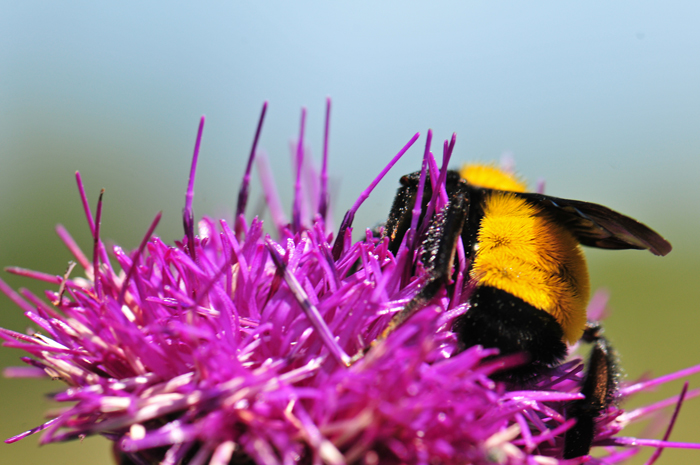
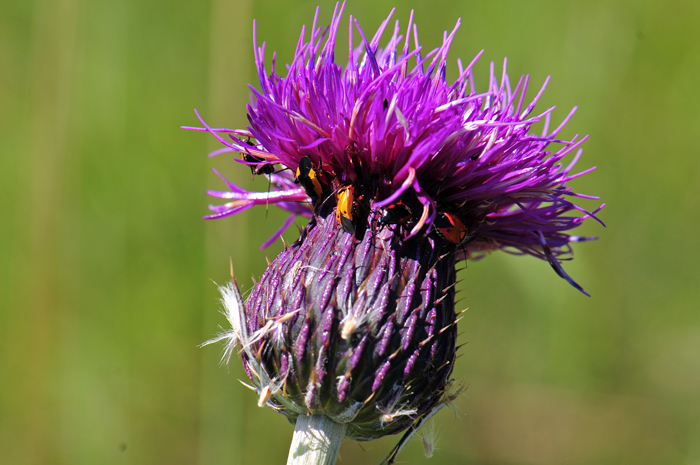
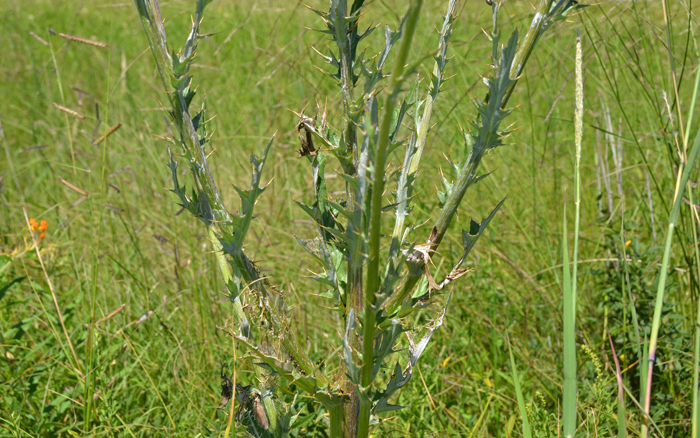
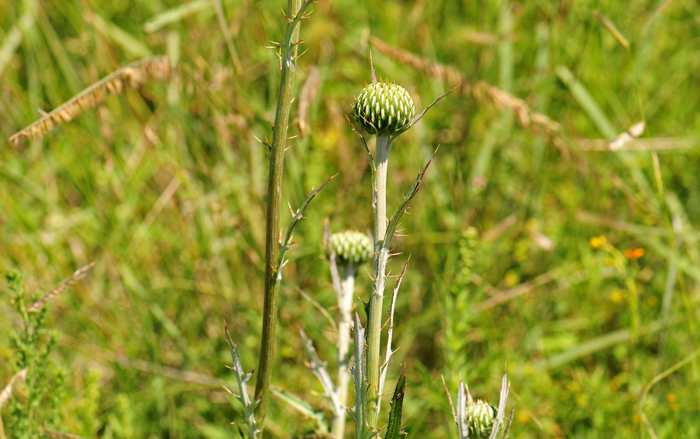
Scientific Name: Cirsium grahamii
Common Name: Graham's Thistle
Also Called:
Family: Asteraceae, Sunflower Family
Synonyms: ()
Status: Native
Duration: Biennial or perennial
Size: Up to 3 feet (90 cm).
Growth Form: Forb/herb; generally 1 stem, erect, branches 0 to 4; all parts spiny; slightly cobwebby looking (arachnoid) and covered with small soft hairs (puberulent) or sometimes without any hair (glabrate).
Leaves: Green; alternate along stem and branches; leaf blades oblanceolate to oblong-elliptic; spiny over much of leaf; the edges or margins of the leaf entire, coarsely dentate to deeply pinnatifid, lobes with or without teeth; basal leaves sessile or with narrow wings, basal leaves often remain green and healthy at bloom, basal leaves sometimes clasping.
Flower Color: Deep purple; large showy discoid flower heads slightly cobwebby (arachnoid) or without hairs of any kind (glabrous), flower heads single or clusters of 3 to 5; phyllaries lanceolate to linear, tipped with many long stiff spines; fruit is a cypsela, tan with dark speckles to dark purplish brown.
Flowering Season: July or August to September or October, blooms following summer monsoons.
Elevation: 4,500 to 8,500 feet (1,400-2,600 m)
Habitat Preferences: Various high elevation habitats including pine forest openings, evergreen oak communities, closed grassy basins, meadows and damp soil.
Recorded Range: A rare thistle in the United States with a very limited distribution in the mountains of southeastern Arizona and southwestern New Mexico. Graham’s Thistle is also recorded in northern Mexico (Chihuahua, Durango, Sonora and Nuevo León).
North America & US County Distribution Map for Cirsium grahamii.
North America species range map for Cirsium grahamii:
North American range map courtesy of Virginia Tech, Dept. of Forest Resources & Environmental Conservation
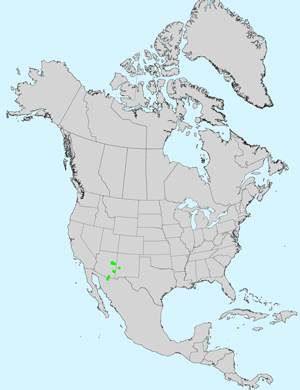
U.S. Weed Information: Unknown
Invasive/Noxious Weed Information: In North America the genus Cirsium is listed as a Noxious Weed by the States of:
Plants included here are invasive or noxious. See the Comments: section below for additional information regarding “noxious” thistles.
Wetland Indicator: Unknown
Threatened/Endangered Information: Unknown
Genus Information: In North America there are 91 species for Cirsium. Worldwide, The Plant List includes 481 accepted species names and a further 812 scientific names of infraspecific rank for the genus.
The genus Cirsium was published by Philip Miller in 1754.
In the Southwestern United States: Arizona and New Mexico each have 19 species of genus, California has 26 species, Nevada has 16 species, Texas has 12 species, Utah has 23 species. All data approximate and subject to revision.
Comments: There is little botanical information for Graham’s Thistle which like many native thistles have limited geographic distribution and are not aggressive or a noxious weed as notorious thistles. It appears to be more specialized in its habitat requirements as suggested by its extremely limited geographic range.
Superficially similar in appearance to Wheeler’s Thistle, Cirsium wheeleri.
In reality, most southwestern native thistles, including Graham's Thistle, are non-aggressive; non-invasive and beneficial as pollinators. Our native thistles have evolved over thousands of years and have mostly thrived without ever becoming weedy. However, many native thistles are now threatened and some species are at risk of extinction.
In Southwest Desert Flora also see; Arizona Thistle, Cirsium arizonicum, New Mexico Thistle, Cirsium neomexicanum, Mojave Thistle, Cirsium mohavense and Yellowspine Thistle, Cirsium ochrocentrum.
For an interesting article on native thistles in North America see Native Thistles: A Conservation Practitioner's Guide, published on-line by The Xerces Society, For Invertebrate Conservation.
Thistles of the genus Cirsium are known as “plume thistles” because they have feathered hairs on their pappi while thistles of the genera Carduus, Silybum and, Onopordum have a pappi with simple unbranched hairs.
The genus Cirsium was published by Philip Miller in 1754.
The species epithet grahamii (gra'hamii:) is name in honor of James Duncan Graham (1799-1865), a West Point Graduate and U.S. Army Officer. Mr. Graham is the namesake of Mount Graham, in Graham County, Arizona, and Graham County, Arizona was named after Mount Graham. Mr. Graham is also one of the founders of the United States army's topographical section and well known for his map making skills.

